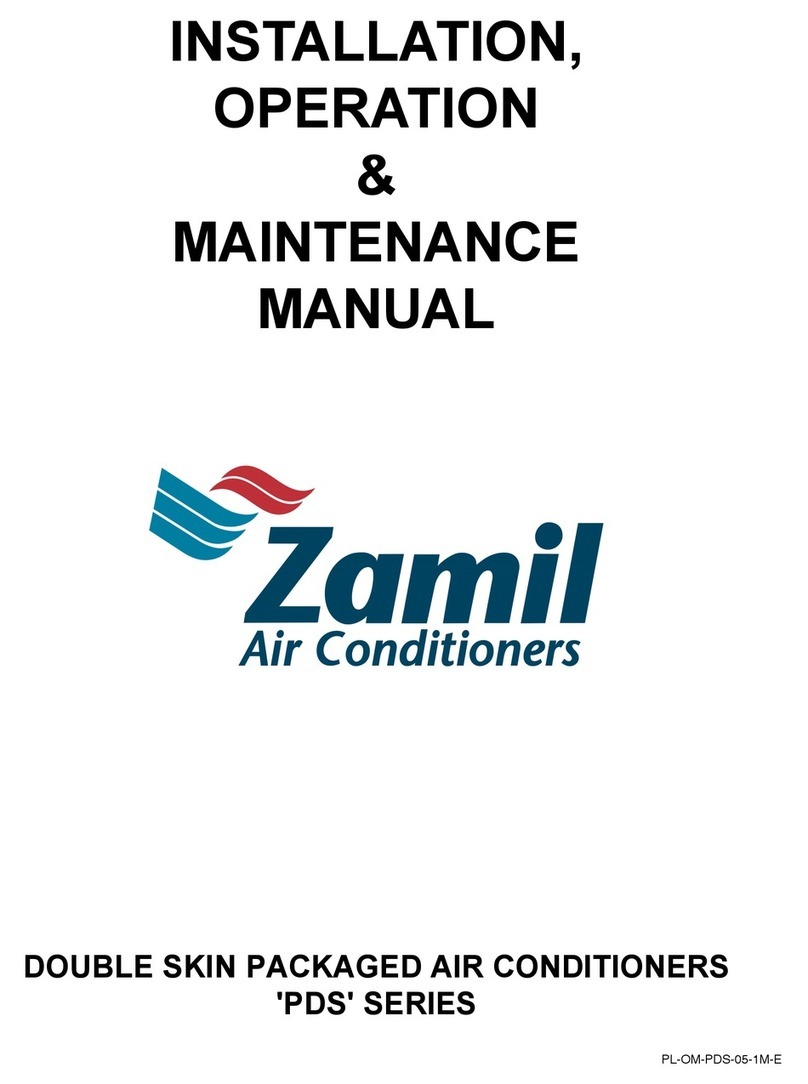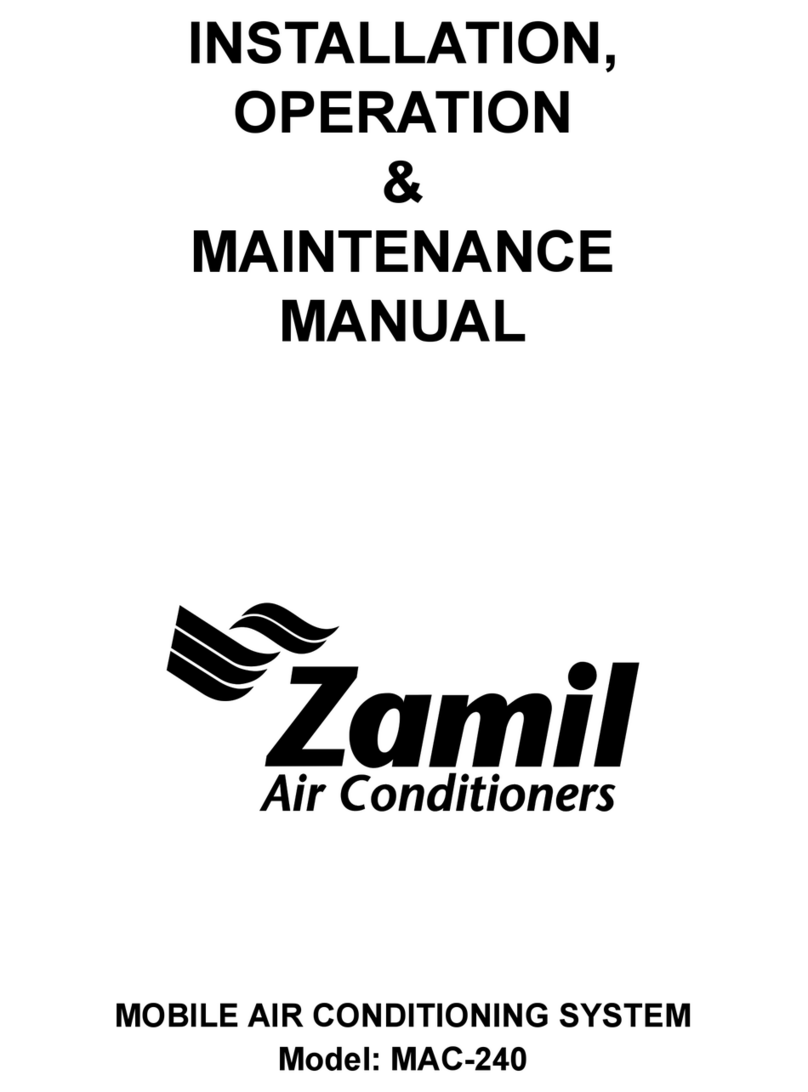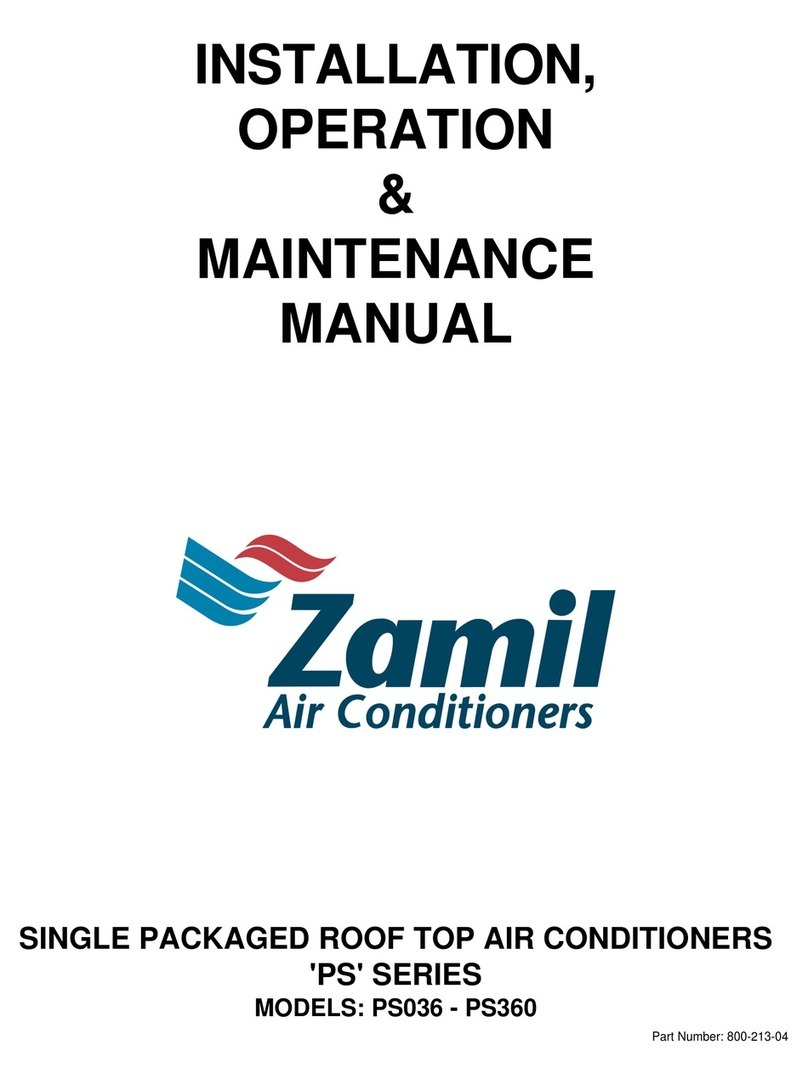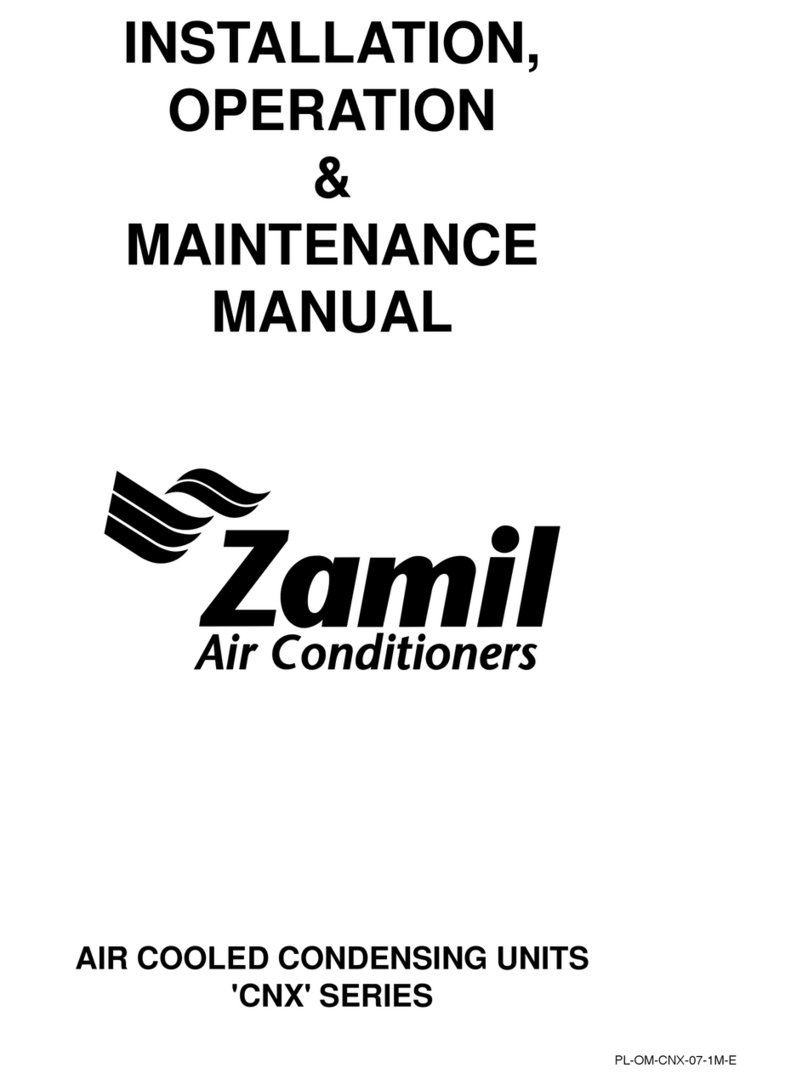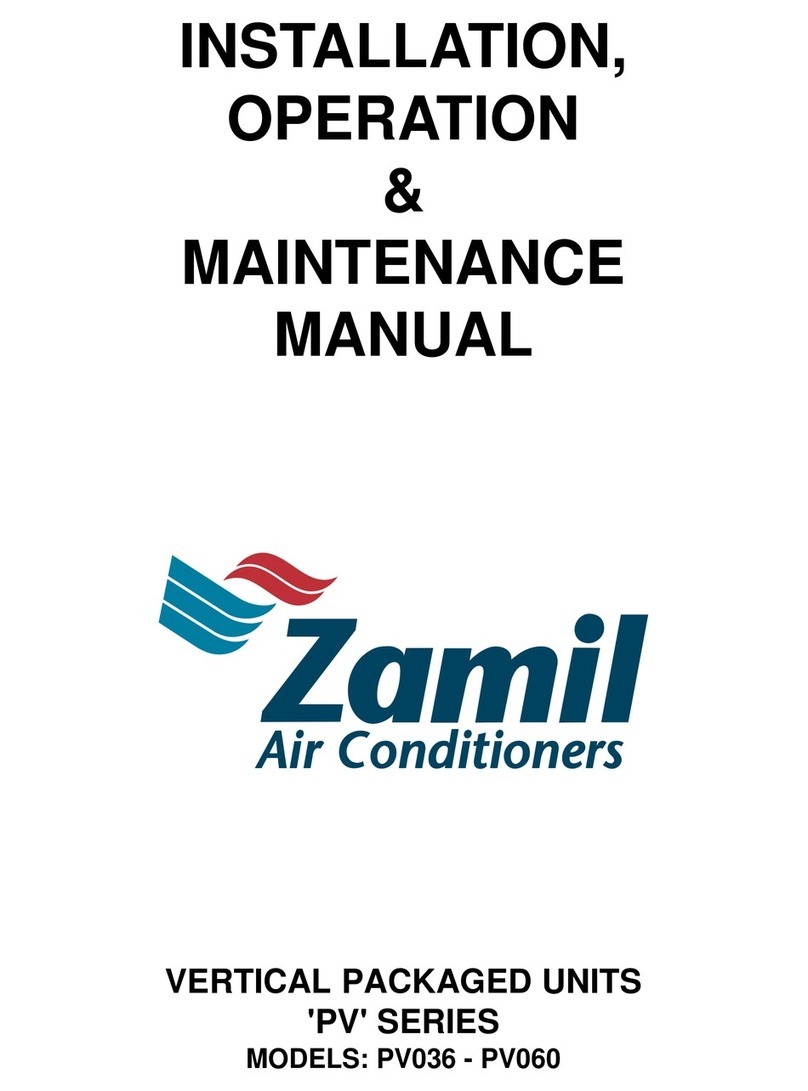
1& 2
BASIC 3, 4 & 5
NOMINAL
COOLING
CAPACITY
(MBH)
7
REFRIGERA-
TION CIRCUIT
6
ELECTRICAL
SUPPLY
( V-Ph-Hz )
9
MODE 11
CONDENSER
COIL
CX
CLASSIC
CONDENSING
UNIT
150
180
220
240
300
360
S: SINGLE*
D: DUAL
H: 208/230-3-60
M: 380-3-60
(4 WIRE)
F : 460-3-60
C: COOL ONLY
H: HEAT PUMP+
A:ALUMINUM
FIN
B: COATED
ALUMINUM
FIN
C:COPPER FIN
MODEL DECODING
8
COMPRESSOR
TYPE
S: SCROLL
13
OTHER OPTIONS
10
CONDENSER
MOTOR
N: STANDARD
L: LOW
AMBIENT
12
PDS OPTION
N: NO OPTION
F: STD. UNIT WITH
FILTER DRYER
& SIGHT GLASS
K:
CONDENSING
UNIT WITH
SYSTEMIZER
**
P: PDS***
R :F&K
S :F&P***
T :K&P***
Q : F, K & P***
N: NO OPTION
U: UVM
V: VOLT FREE
CONTACTS
C: U & V
*Applicable for CX150 only.
** To match with double skin units only.
*** Applicable for cool only models.
+Applicable for CX150 to CX220 only. GENERAL STATEMENT
These units are from the Classic CX series that was designed and built for the optimum performance when matched with the
right indoor unit (Refer to indoor unit catalog). However, it is required that you become well acquainted with good practices for
the proper installation, operation, and maintenance procedures in order to ensure a safe trouble free operation, year after year.
Mostof theproceduresdescribedinthis manualrequire certainskills andexperience. Onlyhighly skilledand experienced
technicians should perform the installation and other maintenance procedures.
WARRANTY
All of the Classic CX series are covered by the standard warranty terms against any manufacturer defect. Should you
encounteranyproblemthat fallsunder thewarrantytermspleasecontact yournearest “ZamilClassic” dealer/representative.
SAFETY ISSUES
There are three levels of safety hazards that are identified throughout this manual as Warning (where the situation will
result in personal injury), Caution (where personal injury might occur), and Attention (where minor personal injury and/or
property damage could happen). Please understand and respect those identifications.
WARNING: These units operate on a high voltage with moving parts (at high speed) which can lead to
serious injuries and/or damage to the unit. Never attempt to service the unit unless the main electrical power
supply has been disconnected.
CAUTION: Extra care should be observed when installing, test running, adjusting, servicing, or maintaining
the unit as the hazard of explosion, fire, electrical shock, and potential personal injury and property damage
are present.
When performing any task pertaining to the installation and maintenance of the unit, the skilled technician should observe
all the applicable safety measures (wear of safety helmet, boots, and goggles. Use of proper handling materials for
brazing and use of wet cloth for sequencing. A fire extinguisher should be easily accessible etc). He should also read all
the instructions and information in this manual prior to attempting to perform any installation or servicing of the unit.
All applicable local codes should be observed during installation and servicing.
INSPECTION FOR DAMAGE
The unit should be carefully inspected visually for any sign of physical damage due to mishandling or missing parts. If
such a case arises, please indicate it on the corresponding delivery note before sign it and inform your nearest “Zamil
Classic” dealer and/or sales office.
2












